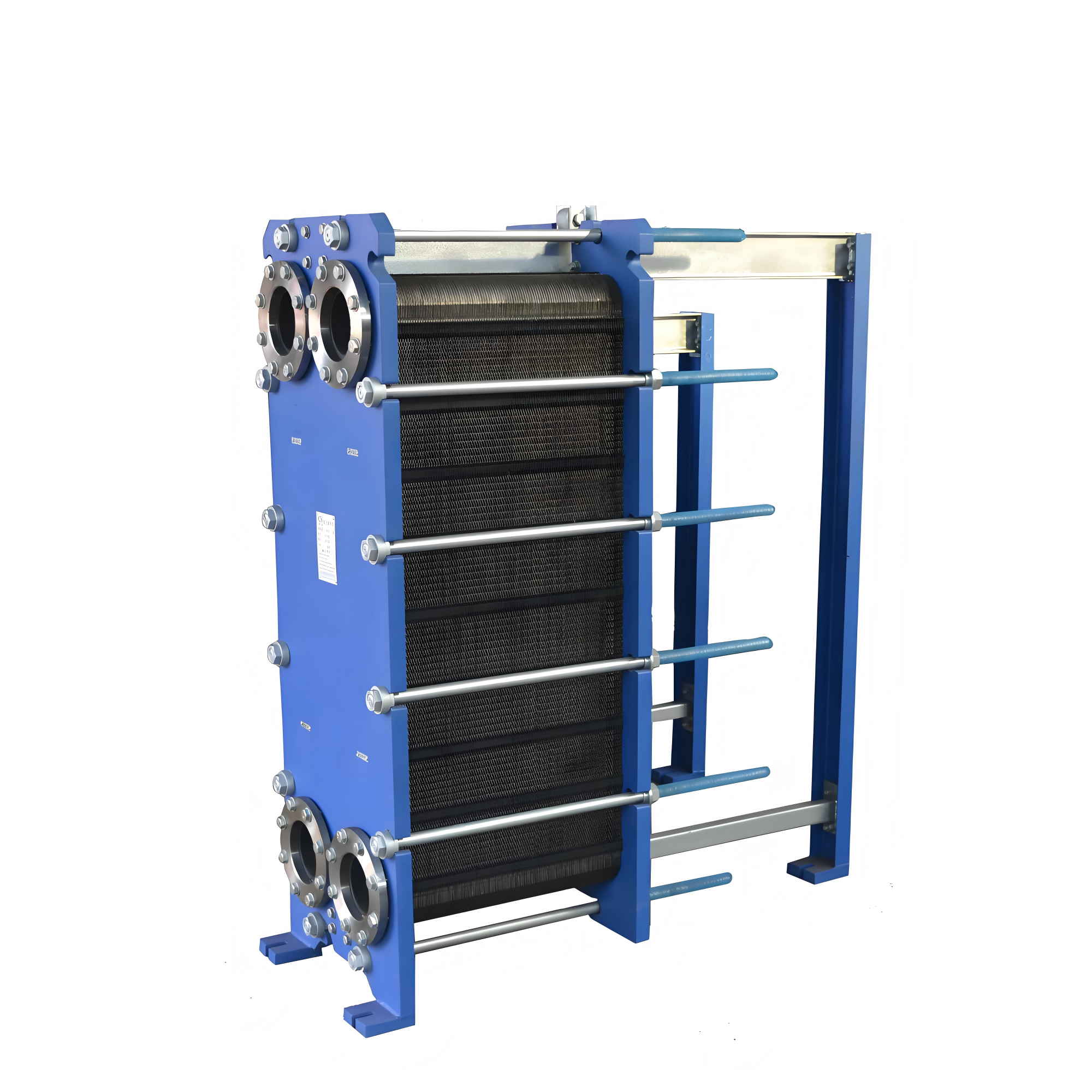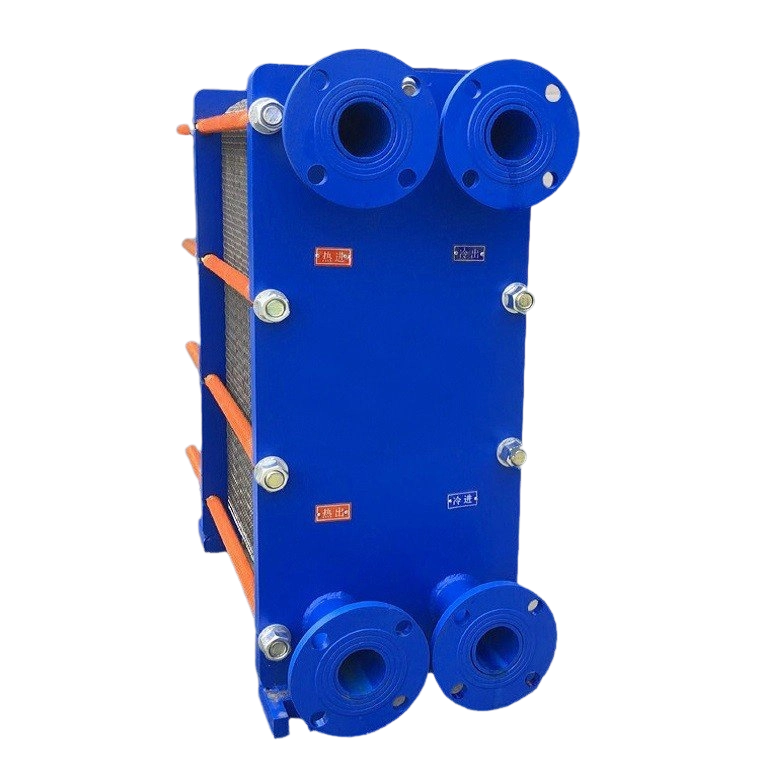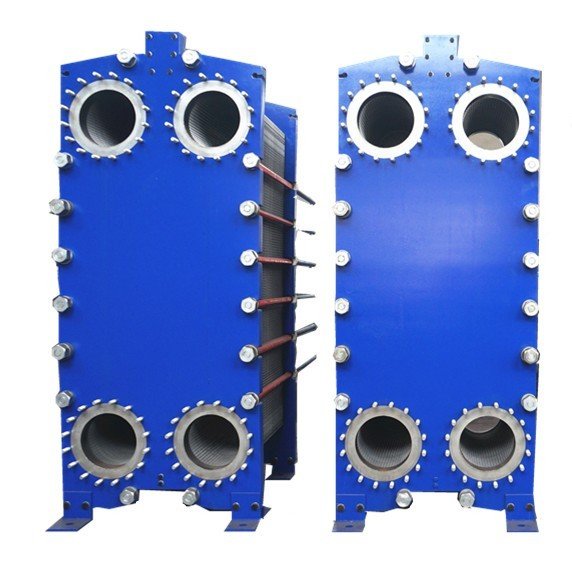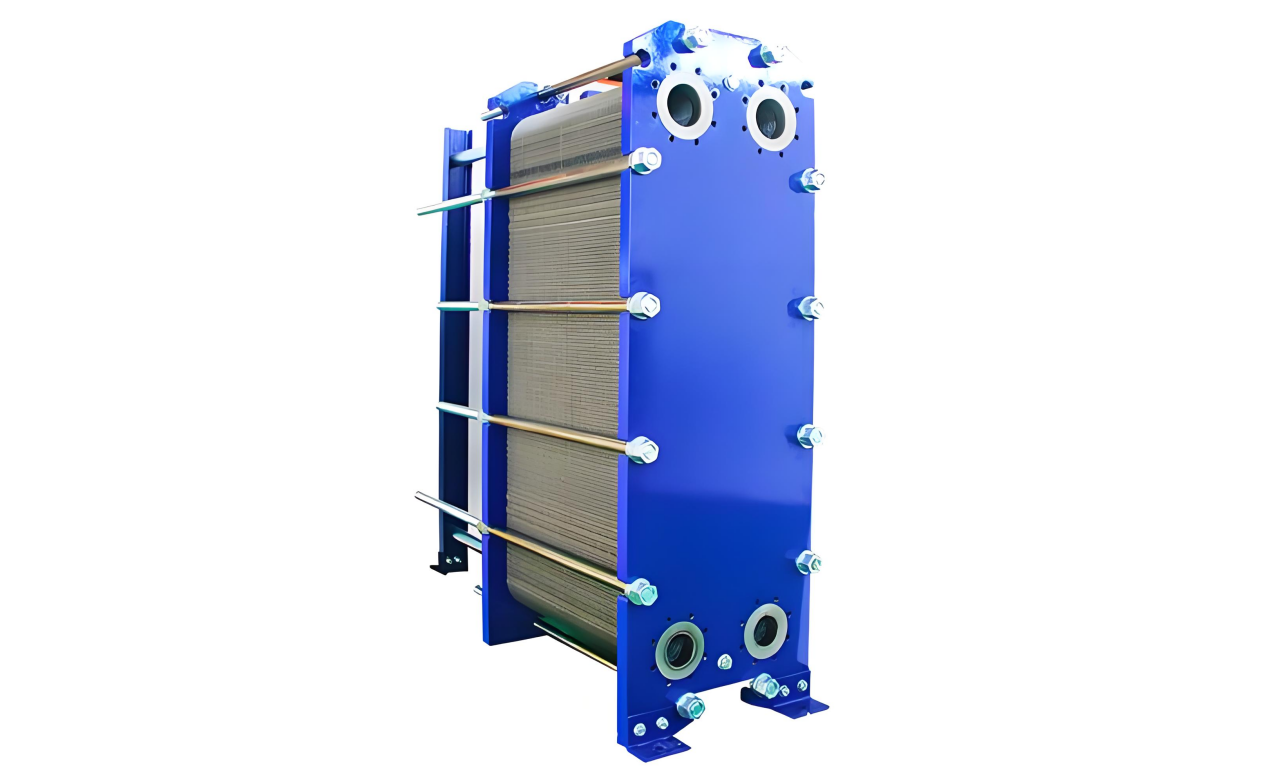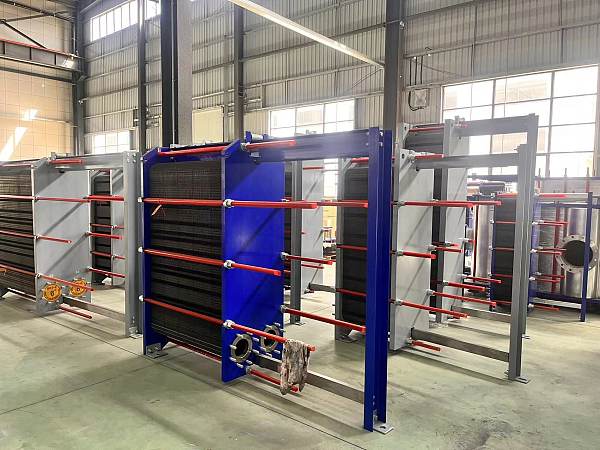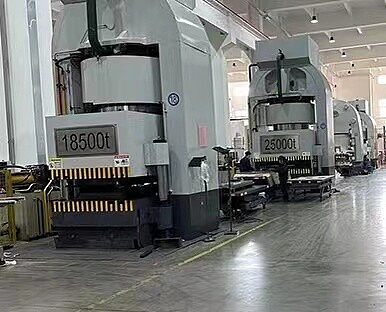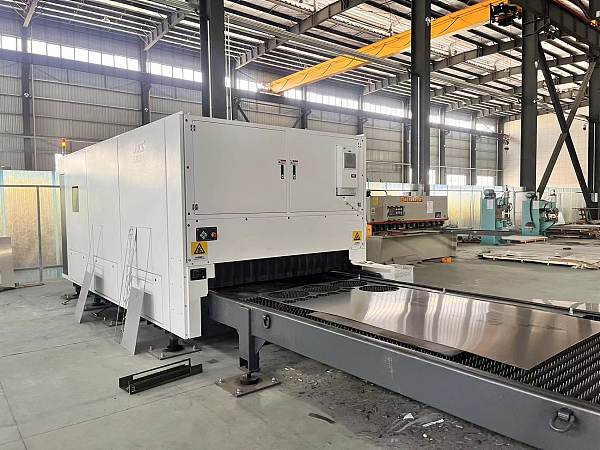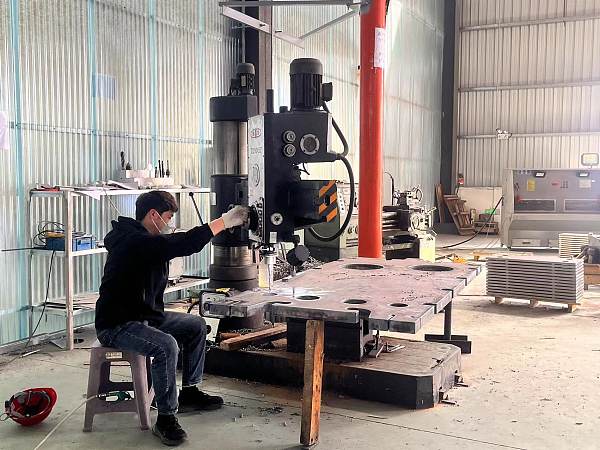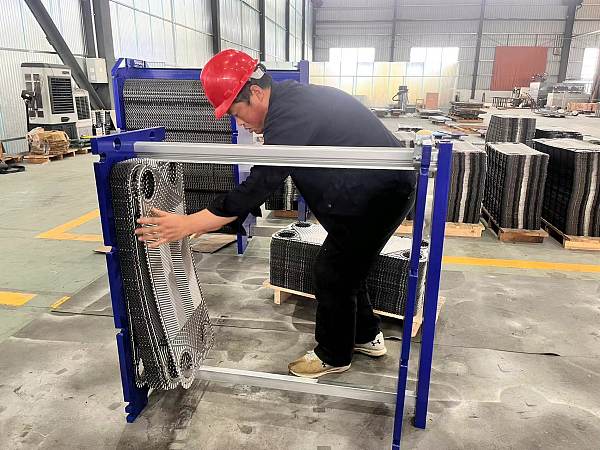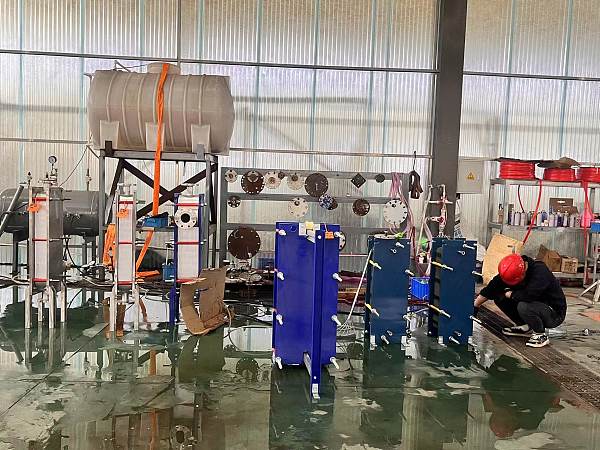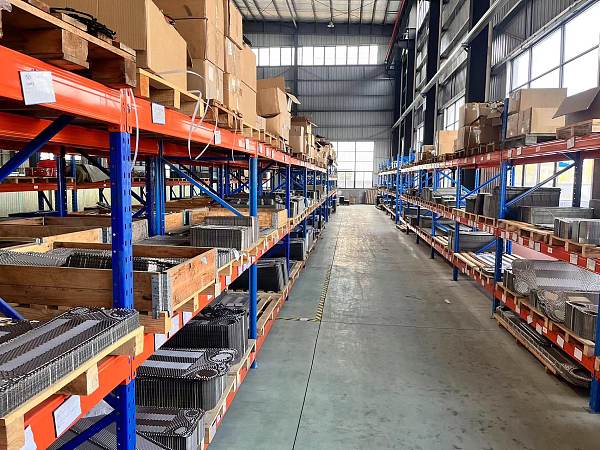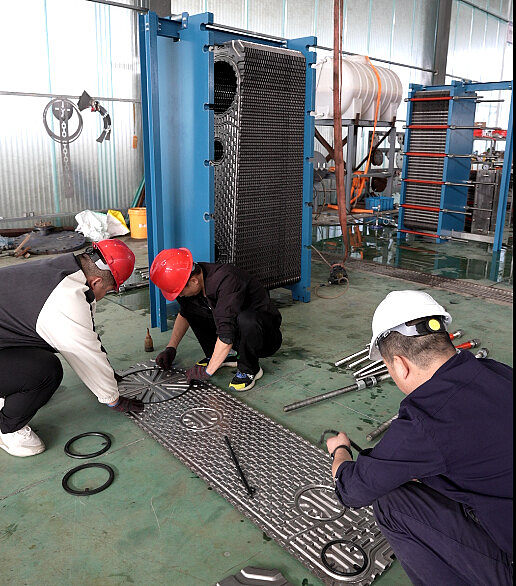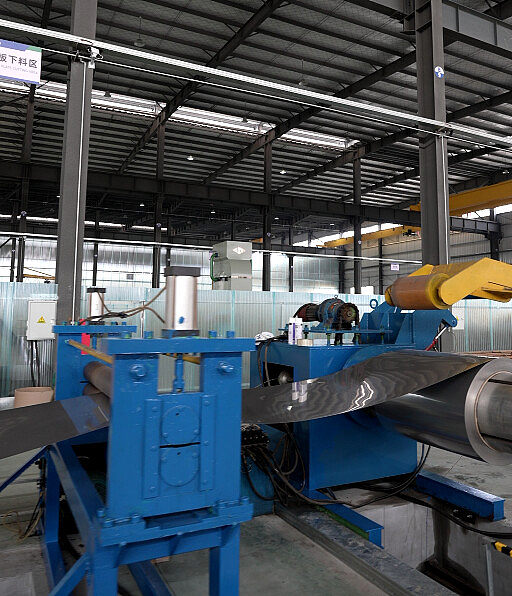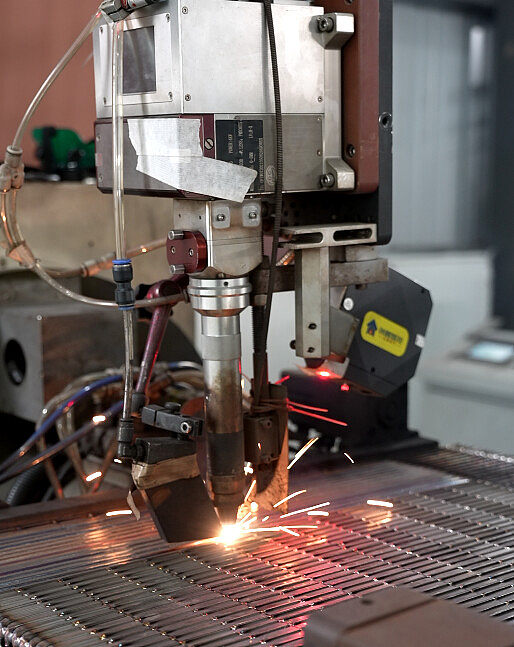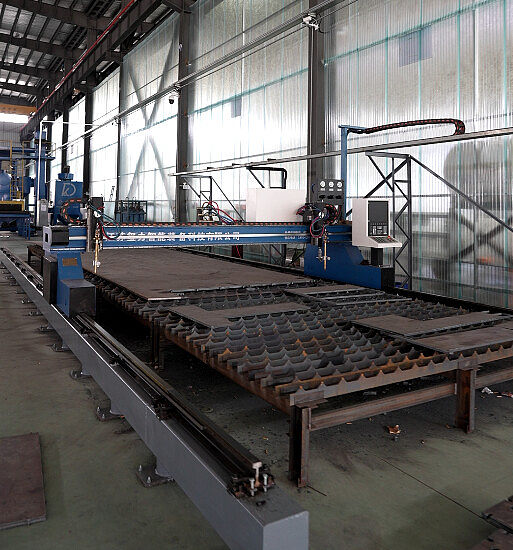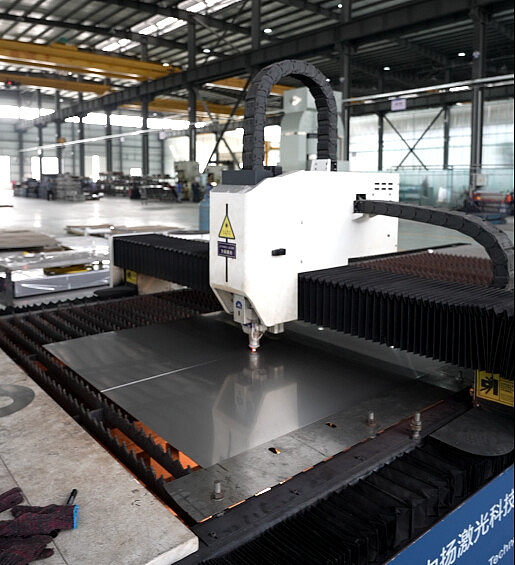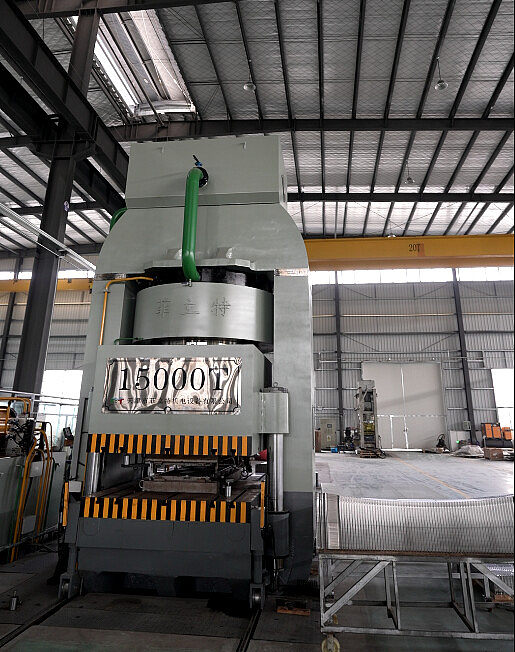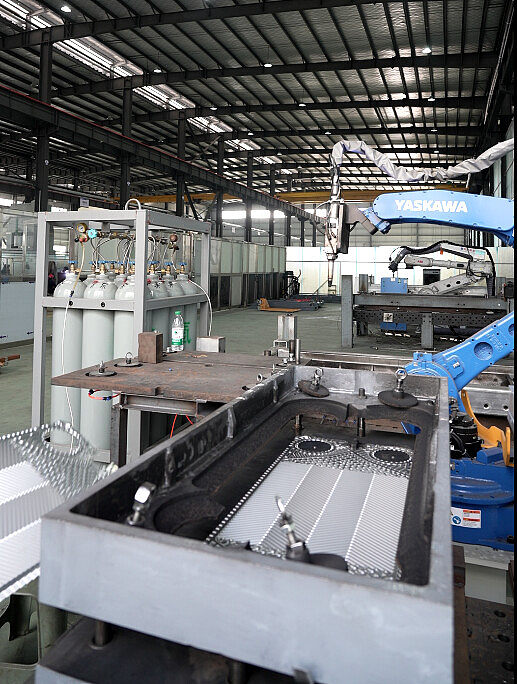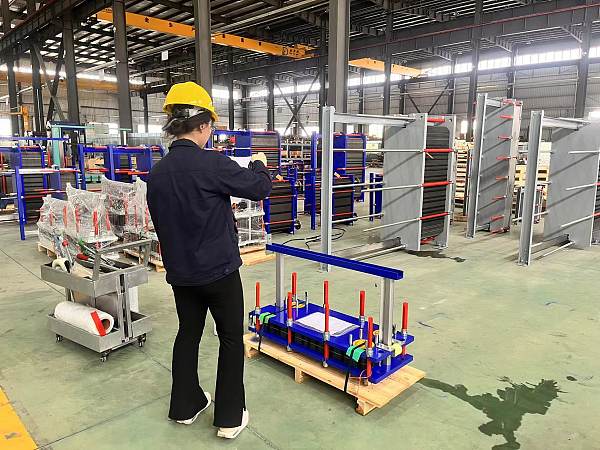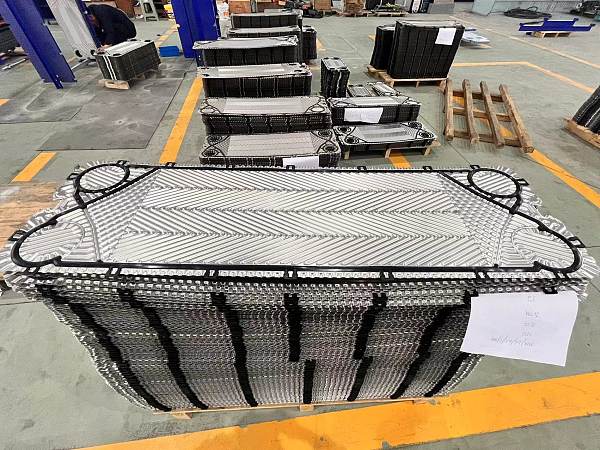Gasketed plate heat exchanger (PHE)
What is a Plate Heat Exchangers (PHEs)?
A plate heat exchanger (PHE) is a compact, high-efficiency heat transfer device that uses a series of thin, corrugated metal plates stacked together. These plates create alternating channels for hot and cold fluids, allowing rapid heat exchange without mixing.
Construction of a Plate Heat Exchanger (PHE)
A plate heat exchanger is a compact and efficient device used for heat transfer between two fluids. Its main components include:
Plate Pack (Heat Transfer Plates)
Typically made of stainless steel (e.g., 316L), titanium, or other corrosion-resistant alloys.
Thin, corrugated plates with a pattern (e.g., herringbone, chevron) to enhance turbulence and heat transfer.
Provides a large surface area for heat exchange between the hot and cold fluids.
Gaskets (Sealing Elements)
Usually elastomers (NBR, EPDM, Viton) depending on fluid compatibility.
Placed around the edges and ports of each plate to prevent leakage.
Clip-on gaskets: Easily replaceable.
Glued gaskets: Permanently bonded.
Frame Assembly
A thick, rigid plate that holds the plate pack in place.
Allows for plate addition/removal during maintenance.
Supports and aligns the plates during assembly.
Tightening Bolts
Compresses the plate pack between the end plates to ensure a tight seal.
Can be loosened for cleaning or plate replacement.
Nozzles (Ports)
Allow hot and cold fluids to enter and exit the exchanger.
All plates have corresponding holes that form continuous flow channels.
Flow Distribution
Hot and cold fluids flow in alternating gaps between plates.
Fluids usually move in opposite directions (counterflow) for maximum efficiency.
Connections & Supports
Connected to the nozzles for fluid entry/exit.
Provides structural stability.
Applications of Plate Heat Exchangers (PHEs)
Plate heat exchangers are widely used in industries requiring efficient heat transfer with compact design.Key applications include:
– Transfer heat between water loops.
– Evaporators/condensers for refrigerant cycles.
– Rapid heating/cooling for microbial safety.
– Ultra-high-temperature (UHT) processing.
– Acid, alkali, and organic chemical processing.
– Lube oil, hydraulic oil temperature control.
– Capturing heat from exhaust gases or steam.
– Heat exchange between brine and clean water.
– Engine cooling, desalination pre-heating.
– Viscosity control for heavy fuel oil.
– CIP (Clean-in-Place) systems.
– Maintaining precise fermentation conditions.
Plate & Gasket Materials in PHEs
Plate Materials
The plates are typically made from corrosion-resistant metals with high thermal conductivity:
Gasket Materials
Gaskets seal the plates and must withstand temperature, pressure,
and chemical exposure:
Advantages & Disadvantages of Plate Heat Exchangers vs. Other Types
Advantages of PHEs
Higher Heat Transfer Efficiency
Turbulent flow from corrugated plates improves heat transfer (3–5x better than shell-and-tube).
Compact & Lightweight
Requires **90% less space** than shell-and-tube exchangers.
Easy Maintenance
Plates can be opened for cleaning/inspection.
Modular & Scalable
Capacity can be adjusted by adding/removing plates.
Lower Fouling Risk
Turbulent flow reduces scaling compared to laminar flow in tube exchangers.
Lower Energy Consumption
Operates efficiently at smaller temperature differences.
Disadvantages of PHEs
Limited High-Pressure/High-Temperature Performance
Gasketed PHEs typically max out at **25 bar / 180°C (welded designs go higher).
Not Ideal for Particulate-Laden Fluids
Slurries or viscous fluids can clog narrow plate channels.
Higher Initial Cost
More expensive than simple shell-and-tube exchangers.
Gasket Degradation
Requires periodic replacement (except in fully welded PHEs).
Comparison with Other Heat Exchangers
Frequently Asked Questions
Answer: We are a factory manufacturing plate heat exchangers in Jiangsu, China. More than 15 years ofproduction experience.
Answer: Sure, Welcome coming to visit our factory! We are located in No.198 Zhongshan Road, Qiaoqi, Xuxiake Town, Jiangyin City, Jiangsu, china.
Answer: It depends on which product you purchased, factory workload, outsourcing period of specialmaterial etc.Our fastest delivery time for Gasketted plate heat exchanger is ex-works 2~3 weeksafter replacement oforder.
Answer: We guarantee our product quality in the process of manufacturing, such as:
Raw material check,e.g.PMl, traceability.
Manufacturing process inspection.
Plate pressing inspection.eq.PT RT.
Welding inspection,eg.WPS,PQR,NDE,dimension.
Assembly inspection.
Final assembly dimensionalinspection.
Final hydraulic test.
Contact us
Whether you have questions about our products, need a quote, or want to discuss a custom order, our team is ready to assist you.
Get Free Quotes
Please enter what you would like to know and we will contact you within 24 hours.
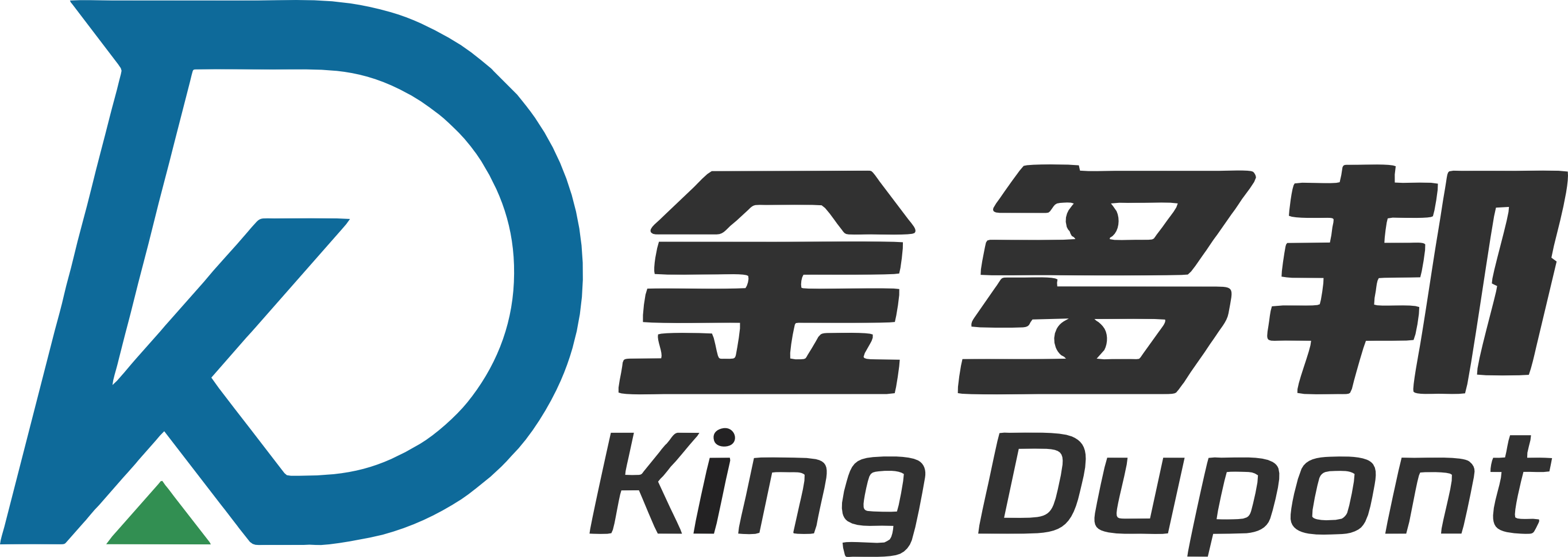
King DuPont, China famous brand of heat transfer and fluid handling supply platform.
Contact

Get Free Quotes
NEED TO CHAT?
We will get back to you within 24 hours of receiving the message.


